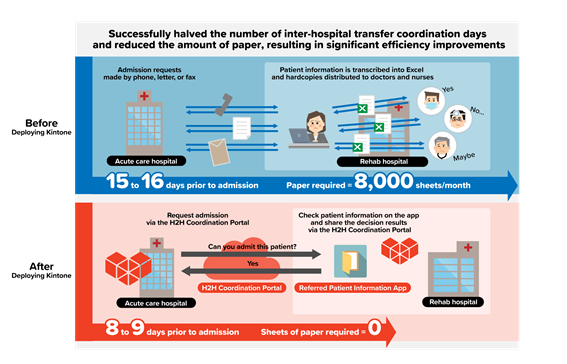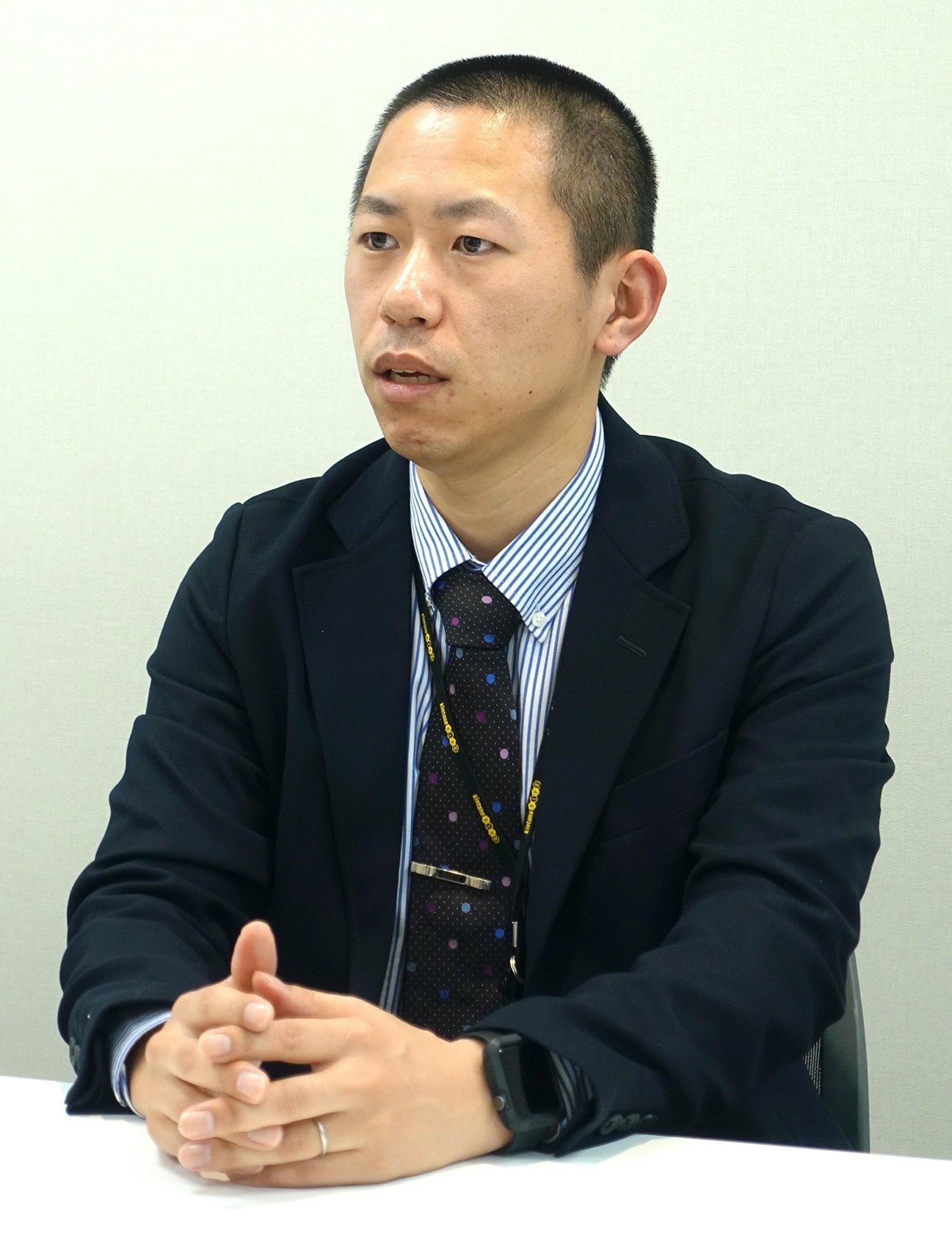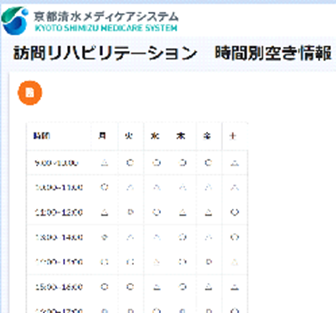Customer Stories

Area of Business: Convalescent stage rehabilitation
Kintone Usage: Inter-hospital transfer coordination, patient information management, data aggregation, communication
Kyoto Rehabilitation Hospital is a medical care facility that operates within the auspices of the regional medical care framework; it only has convalescent recovery wards and its patient intake comes from patients from acute care medical institutions. Kyoto Rehabilitation Hospital deployed Kintone as an information sharing platform for H2H collaboration in order to speed up the patient admission process for patients being transferred from acute care hospitals. We interviewed Mr. Koichi Takimura, Assistant Manager, Community Medical Liaison Office, Kyoto Rehabilitation Hospital, about what led them to choose Kintone and how they are currently using it.
Kyoto Rehabilitation Hospital first opened in 1953 as Shimizu Clinic and later became Shimizukai Kyoto Fushimi-Shimizu Hospital, which focused on neurosurgery. In 2016, it made a new start in Fushimi Fukakusa, in Kyoto, with all of its 64 general hospital beds repurposed as dedicated convalescent rehabilitation beds. A geriatric health care facility and a special nursing home are co-located on the same site, creating a natural collaboration that bridges the gap between medical care and aged care. The regional medical care framework includes promoting functional segmentation of hospital beds, and the hospital plays a vital role within this framework as a medical and aged care group capable of providing comprehensive support for post-acute patients.
Within the hospital, the Community Medical Liaison Office, which is the core of community medical care coordination, handles everything from admission of patients from acute care hospitals, sharing patient information within the hospital, and providing post-discharge support for patients to allow them to receive ongoing home health care once they have recovered and are back in the community. “In Japan, although normal hospitals have both emergency and convalescent beds, it is rare to find a hospital that has only recovery-phase rehabilitation beds. Our referral rate from external medical institutions is 99.5%, so from a business perspective, cooperation and coordination with external medical institutions is extremely important," explains Mr. Takimura. Thus, the Community Medical Liaison Office plays a vital role in key areas in addition to, of course, supporting the hospital admission and discharge procedures. These include sales activities targeting external medical institutions and setting up H2H coordination systems.
Normally, acute care hospitals send patient admission requests and patient information by phone, letter, or fax. These communications are then used to check the hospital bed situation within the hospital and then used as the basis to ask the doctors and nurses to make decisions. The final decision on whether or not to accept the patient is then communicated to the acute care hospital, and if admission is possible, admission procedures will then commence. However, under the conventional workflow, patient information was transcribed into Excel and then hardcopies distributed to doctors and nurses, so deciding whether to accept the patient or not took a lot of time.
“Acute care hospitals are often required to transition patients to the recovery phase as soon as possible. In practice, after asking the patient and their family what their wishes are, the acute care hospital will then share the patient information with the relevant hospitals, and submit an admission request with the hospital that is able to accept the patient the quickest. This means that it is important from a business perspective for us to indicate whether we can accept a patient or not as quickly as possible. However, the actual number of days it took to coordinate an inter-hospital transfer (time taken to decide whether or not to accept a patient) was 15 to 16 days, which was long even by the national average," recalls Mr. Takimura.

Mr. Takimura was looking for a new system that would overcome the need for patient information and patient acceptance decisions to be managed on Excel spreadsheets. In fact, they considered systems that facilitate information sharing on the cloud, such as Google and AWS, but they needed a system that could be customized in a way that was tailored to their hospital. Mr. Takimura also hoped for a platform that would allow format-agnostic data management to enable information sharing with facilities, such as nursing homes, in the future. “We don’t have an IT department within the group, so I had to take the lead in building the system. We wanted a platform that could be run without dedicated full-time IT staff.”
That's when Mr. Takimura discovered Kintone, from Cybozu. He explains, “In fact, Kintone came up when I was discussing how to improve medical cooperation in our region with the staff of the Uji-Tokusyukai Medical Center. They told me their hospital was using Kintone as an information sharing platform. With Kintone, you can share information with doctors and nurses in a way that is similar to Excel, and things start to take shape just by adding items of information into the fields. With Kintone, even I can create apps, so I thought it would be the most suitable solution to roll out within our group."
When it comes to handling patients' personal information in the cloud, Mr. Takimura concluded Kintone would provide sufficient security. “In addition to two-step authentication, we realized we could limit access sources using Kintone’s IP address restriction feature. We also found we could securely access and view information while away from the office, such as during home rehab visits, thanks to the Client Certificate Authentication feature. It is definitely riskier to manage patient information in Excel on your personal computer in the first place. Nowadays, electronic medical records are also used in the cloud, so we decided that we could run this system in the cloud as well.”
Given this, the hospital initially signed up for Kintone's Lite course* in the domain that Uji Tokusyukai Hospital was signed up for, and started operating the H2H Coordination Portal as a communication platform for sharing patient information, information on the availability of hospital beds, and on patient acceptance. After a month of using Kintone, the hospital found that there were also many other situations where Kintone could be used within their own hospital as well, so after a free trial, they switched to Kintone’s Standard course*. (Note: This refers to a plan/subscription offered within Japan. Please contact your local representative for details of plans/subscriptions available in your location.) Since then, the hospital has shared the same guest domain with Uji Tokusyukai Hospital, and Kintone is being used as the platform for information sharing and communication with Uji Tokusyukai Hospital for inter-hospital coordination.
Currently, the system is used by about 10 people, including members of the Community Medical Liaison Office, counselors and other administrative staff at each facility, as well as the Director of Nursing, and they have also started recording home-visit rehab report details in Kintone. In addition, Kintone is also used to manage some applications for the special nursing and geriatric care facilities. A number of Kintone apps have already been created, and in addition to the initial use for coordination between hospitals, Kintone is also being used to manage a variety of information within the hospital that was previously done in Excel.
In terms of use in inter-hospital coordination in particular, the staff of the Community Medical Liaison Office can enter information on waiting lists for hospital beds in the H2H Coordination Portal, a space set up by Uji Tokusyukai Hospital, so that Uji Tokusyukai Hospital can check information on waiting lists at cooperating hospitals.
Information about the patient to be transferred is recorded as a record in the Inter-hospital Transfer Consultation List app, and the comments section is used for simple communication and to communicate the decision by each hospital on whether or not to accept the patient. In addition, the information contained in other hospital’s brochures is also managed in the file management solution, so that Uji Tokusyukai Hospital can use the brochure information when it gives patients information about the hospital they will be transferred to.
On the other side, within the hospital, information on transfer request patients is put into the Referred Patients Information App so that each department can decide whether they can accept the patient or not. In the Referred Patients Information App, the Community Medical Liaison Office, the Rehabilitation Department, the Medical Administration Department, and the Director of Nursing decide whether or not a patient can be accepted, and enter the reason in the comments section. “We are now able to leave evidence that each section has made a sound decision," says Mr. Takimura.
Requests from acute care hospitals other than Uji Tokusyukai Hospital are still made by phone or fax, and this information is also managed in Kintone. If a request comes in over the phone, the details are manually entered into Kintone on the spot, and if it is faxed, a PDF is pasted into Kintone to prompt each department to make a decision. Since the PDF contains personal information, a PDF preview plug-in has been installed so that the PDF is read only.
Once the decision is made to accept the patient, the information is then transferred to the Inpatient App, where rehabilitation records and discharge dates are coordinated. “We also coordinate the number of admissions and discharges on a daily basis by looking at the calendar as coordination is required in many areas both pre-and-post admission and discharge," Mr. Takimura explains. This inpatient information can be easily printed out using PrintCreator for ease-of-use by people such as Care Managers, who consult with patients' families, and this information can also be faxed to outside parties at the touch of a button.
After discharge, the patient's personal information is transferred to another system and no personal information, such as their name, is left in Kintone. However, for statistical purposes, the minimum information required to compile statistical data is stored in the Admin Data App. “We need to know numbers, such as the number of new admission requests, the rate of recovery and return home by disease, and the average number of days in the hospital, so that we can strategize in meetings. We make sure that only the information for that purpose can be aggregated," he explains.
Information on the availability of hospital beds is entered in Kintone, not only by the Kyoto Rehabilitation Hospital but also by the group’s special and geriatric care facilities, allowing the waiting list information to be checked via the website, and the latest waiting list information can also be checked instantaneously using the QR code on the consultant's business card. The system is designed to allow sales staff to immediately ascertain the latest information from the hospital even when they are out in the field.

By using Kintone to develop a platform for H2H coordination, the number of days needed for inter-hospital transfer coordination, which was the initial problem, was reduced to a minimum of 8.9 days, meaning the time saved by improving operational efficiency can now be spent with patients.
“We used to receive about 10 patient inquiry faxes at once, and we would copy the information and distribute it to the 10 or so departments that needed to make a decision on whether or not to accept the patient. With about 80 referrals coming in a month, we used to generate a total of 8,000 sheets of paper per month, but now none of that paper is needed anymore. We have succeeded in significantly shortening the number of days required for inter-hospital transfer coordination by reducing the workload, including distribution work, and by speeding up the decision-making process in each department," says Mr. Takimura.
This is an industry where there are a lot of meetings for which a variety of documents have to be put together and output. However, since the information itself is in Kintone, tasks can be accomplished by simply sharing the screen and each department can also check information ahead of time, which greatly reduces the burden of recompiling data and re-issuing the documentation. “In fact, we have set up a hospital information and disease information master directory. We can then retrieve and copy relevant data into other apps from the master directory using Kintone's Lookup feature.” Moreover, the rules are also defined in the master, so that anyone can enter information without making mistakes. “For example, in the case of lacunar infarction, there is a rule that a patient can only be admitted to a rehabilitation hospital within 60 days, but if we prepare this information in the disease information master, the limit date can be automatically calculated and displayed on the patient information screen," explains Mr. Takimura. The system is being used to improve the efficiency of various operations, such as efficiently conducting sales activities based on sales visit histories, and making it easy to create interview records on Kintone when applying for additional time.
Currently, Kintone is being used to collaborate with several hospitals, including Uji Tokusyukai Hospital, but in the future, the hospital would like to include other hospitals to explore efficient forms of regional medical collaboration. Mr. Takimura has been talking to the person in charge at Uji Tokusyukai Hospital, saying, “It won’t increase our income, but we would like to tell the outside world about this system so that we can get more collaborators onboard and create an environment that is easy for all of us to work in."
The hospital also wants to look into a system that can feedback valuable information in Kintone to patients, their families, and their Care Managers as well. “We would like to make it possible for family members to be able to check waiting lists directly, and for family members who live in remote areas to be able to check daily blood pressure and body temperature records via smartphone. After following the necessary procedures, we can share the information with Care Managers, which should lead to higher quality medical care," comments Mr. Takimura.
Kintone Product Introduction Video
